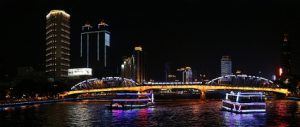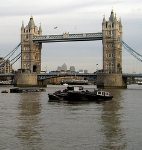China’s National Audit Office (NAO) recently published a report on the last seven years of efforts to deal with pollution in the Liao, Hai and Huai rivers and the Tai, Chao and Dianchi lakes, known collectively as the “three rivers and three lakes”. According to the report, 91 billion yuan (US$13.3 billion) in government investment and bank loans was spent between 2001 and 2007 on 8,201 separate water-pollution projects, including environmental infrastructure in urban areas in the river and lake basins, ecological construction and general improvements. Yet the water quality remains very poor.
Almost 100 billion yuan were spent and 515 million yuan (US$75 million) were wasted on false reports and embezzlement. The ecological crisis, the public suffering and the constantly changing plans for megacities along these rivers and lakes all make one fear for the future of China’s environment and its cities.
I started researching the pollution of Dianchi Lake, in Yunnan province, as an investigative journalist and later completed a doctoral thesis on the matter, looking at the lake from an ecological and anthropological perspective. I focus on the paradoxes and conceptual risks at the heart of how China handles the ecological crisis – in particular, the costs of foresight. The German sociologist Ulrich Beck was the first to propose the concept of the risk society, where decisions increasingly produce unforeseen future hazards. These hazards proliferate and can eventually overwhelm safety systems. A nation may fall into crisis due to a loss of foresight.
The NAO said that management of the rivers and lakes had failed because of inadequacies in these areas: environmental examination and approval; environmental compensation; water pollution statistics; assessment indices; implementation of pollution control plans; enforcement of environmental law; and treatment of urban waste-water. It also pointed to a lack of environmental concern in economic development zones.
But none of these are the crux of the issue. Faced with an unprecedented environmental crisis, the real danger arises from a contradiction between awareness and systems. The systems that exist for managing and investing in the environment perpetuate the pollution.
For instance, the authorities in charge of Dianchi Lake decided to bring water in from the Jinsha River to help control pollution in the lake and water shortages in the city of Kunming. By 2010, Kunming’s population will reach nearly 3.5 million, by 2020 almost five million; the urban area will expand from 201.5 to 470 square kilometres. Meanwhile, Yunnan’s government is working on creating a megacity, one part of which is the idea of a third land bridge between Asia and Europe. This “bridge” would run from China’s eastern port city of Shenzhen, through Kunming to Burma, Bangladesh, India, Pakistan, Iran and Turkey. It would end up in Rotterdam, in the Netherlands, after passing through 21 different cities – a distance of around 15,000 kilometres (3,000 kilometres shorter than the sea route).
Yunnan – a water-poor, inland province, with a rich yet fragile ecology – has not yet developed an effective or intelligent environmental management system. Nor have policy-makers thought about how to create sustainable cities for the province, preferring to simply propose expansion. Hence long-term plans about land bridges and megacities are unpersuasive.
In dealing with pollution, solving social issues created by urbanisation and searching for sustainable modes of development, there is still a tendency to focus on technological fixes. But these do not clarify our plans for the future of cities or necessarily make them more scientific or advanced – in fact, they often continue to create problems.
This lack of foresight means that many areas in need of assistance have become host to manoeuvring by various power groups. There is a tendency to ignore future dangers and confuse their relationships to current pollution problems. In many cases of dealing with pollution, the influence of power is becoming more complex, and the allocation of resources and interests is changing.
A large-scale plan to build a city and scenic area surrounding Dianchi Lake is already underway. Historic villages and semi-urban areas are being flattened. Under that kind of “long-term” guidance, both natural and social sciences need to provide research and analysis. The combination of technology and power in urbanisation will no doubt lead to controversial projects, such as waste incineration, the transportation of water and the construction of clusters of cities.
Dianchi Lake has been given many names through history, from the “Pearl of the Plateau”, to the “Sick Lake” and the “Geneva of the East”. The question is: which one will prove true in the future?
Zhou Lei is a postgraduate anthropology student at Yunnan University and Chevening Scholar at the London School of Economics.
Homepage image from Wikipedia



